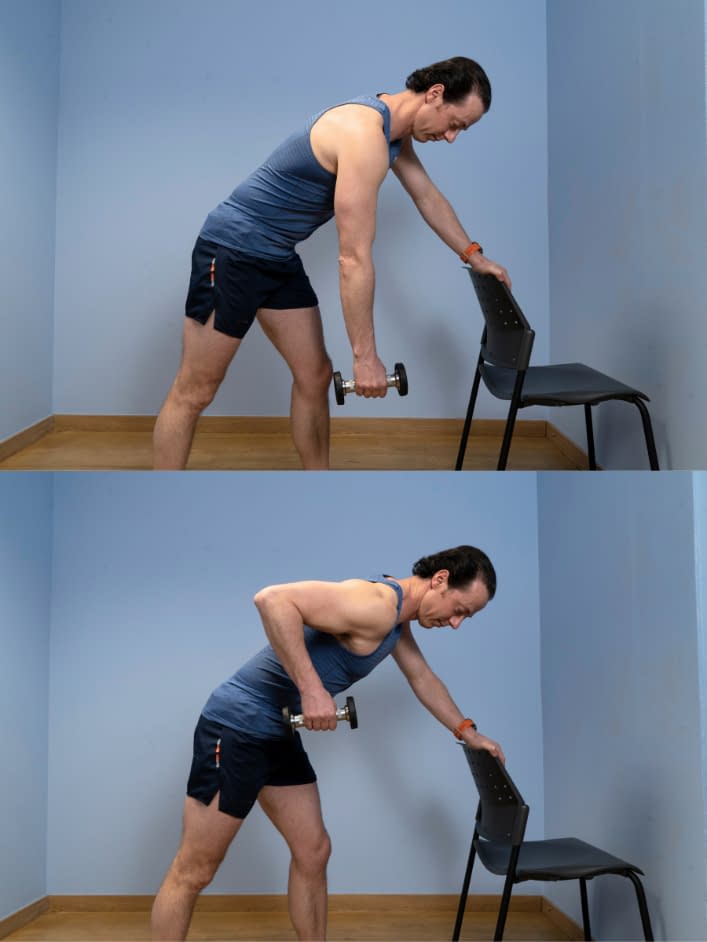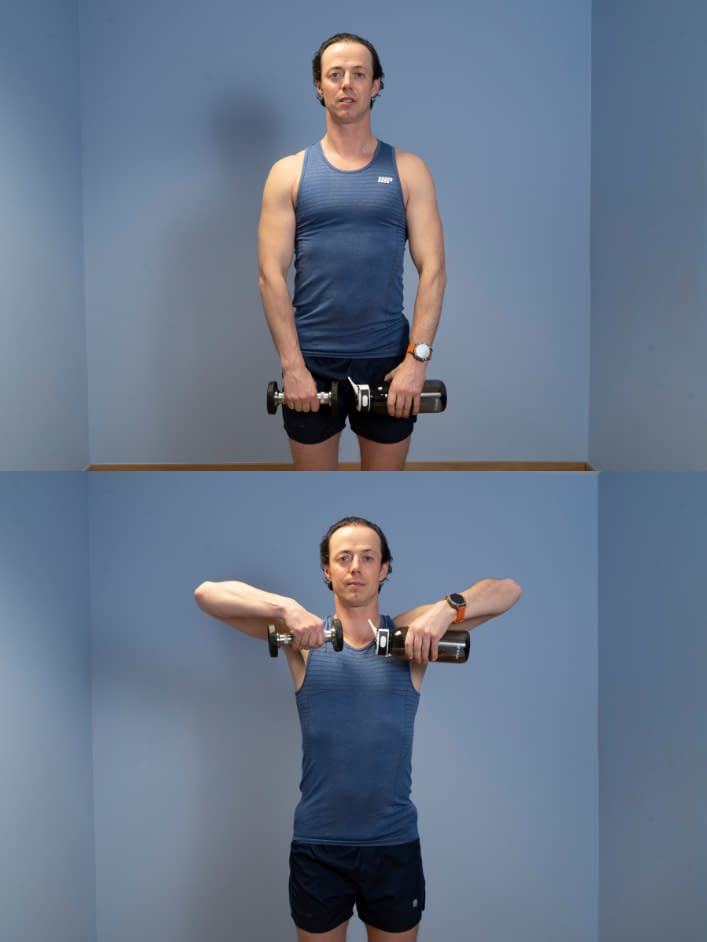Cervical Disc Dysfunction Advanced Exercise Programme
Aim to perform this programme a minimum of once per day unless prescribed otherwise. As with any new exercise, start slowly (repetitions as able) and build up as you are able within the guidelines below.
Pain should not exceed 4/10 whilst completing this exercise programme.
1. Bent over row
- Stand holding a small weight in one hand.
- Slightly bend your knees and flex forward from your hips.
- Keep your upper back straight.
- Pull the weight up to the side of your body whilst squeezing your shoulder blades together (use a shopping bag with household items if you do not have weights). Hold position for 10 seconds.
- Control the movement of your arm back down so your arm is straight.
2. Full neck range of motion
- Sitting upright in a supportive chair.
- Gently bring your chin down to your chest and then lift your head up to look at the ceiling, work in your comfortable range complete 10 of each.
- Then starting from the middle again, bring your left ear down to your left shoulder, and then the exact opposite over to the right. Working in your comfortable range.
3. Upright rows
- Start with arms straight down in front of you with overhand grip holding a small weight (use whatever you have around the house if you don’t have weights) between 1-3kg.
- Draw your wrists and elbows up to your chin.
- Slowly lower over 5 seconds back to the start and repeat.
We recommend consulting a musculoskeletal physiotherapist to ensure exercises are best suited to your recovery. If you are carrying out an exercise regime without consulting a healthcare professional, you do so at your own risk. If you have any concerns whilst completing these exercises, please contact a healthcare professional.
More Plans
This programme focuses on maintaining range of movement within the neck and low-level exercises aimed at the affected nerve(s). It is important not to further irritate the nerve so always work to a point of mild self-perceived tension only. We suggest you carry these exercises out daily prior to progressing onto the next stage of rehabilitation when your pain and function allows. This should not exceed any more than 4/10 on your perceived pain scale.
- 0
- 1
- 2
- 3
- 4
- 5
- 6
- 7
- 8
- 910
This is the next progression. More focus is given to progressive loading of the neck and shoulder regions, with further exercises aimed specifically at the affected nerve. This should not exceed any more than 4/10 on your perceived pain scale.
- 0
- 1
- 2
- 3
- 4
- 5
- 6
- 7
- 8
- 910


